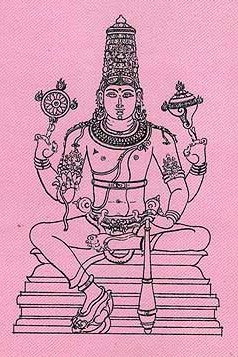Pancaprashna, Pañcapraśna, Panca-prashna: 1 definition
Introduction:
Pancaprashna means something in Hinduism, Sanskrit. If you want to know the exact meaning, history, etymology or English translation of this term then check out the descriptions on this page. Add your comment or reference to a book if you want to contribute to this summary article.
The Sanskrit term Pañcapraśna can be transliterated into English as Pancaprasna or Pancaprashna, using the IAST transliteration scheme (?).
Alternative spellings of this word include Panchaprashna.
In Hinduism
Pancaratra (worship of Nārāyaṇa)
Source: Shodhganga: Iconographical representations of Śiva (pancaratra)Pañcapraśna (पञ्चप्रश्न) or Pañcapraśnasaṃhitā is the name of a Vaiṣṇava Āgama scripture, classified as a tāmasa type of the Muniprokta group of Pāñcarātra Āgamas. The vaiṣṇavāgamas represent one of the three classes of āgamas (traditionally communicated wisdom).—Texts of the Pāñcara Āgamas are divided in to two sects. It is believed that Lord Vāsudeva revealed the first group of texts which are called Divya and the next group is called Muniprokta which are further divided in to three viz. a. Sāttvika. b. Rājasa. c. Tāmasa (e.g., Pañcapraśna-saṃhitā).

Pancaratra (पाञ्चरात्र, pāñcarātra) represents a tradition of Hinduism where Narayana is revered and worshipped. Closeley related to Vaishnavism, the Pancaratra literature includes various Agamas and tantras incorporating many Vaishnava philosophies.
See also (Relevant definitions)
Partial matches: Prashna, Panca.
Starts with: Pancaprashnasamhita.
Full-text: Pancaprashnasamhita.
Relevant text
No search results for Pancaprashna, Pañcapraśna, Panca-prashna, Pañca-praśna, Pancaprasna, Panca-prasna; (plurals include: Pancaprashnas, Pañcapraśnas, prashnas, praśnas, Pancaprasnas, prasnas) in any book or story.